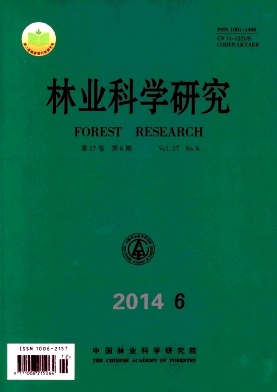|
[1]
|
马 骏. 美洲黑杨引种及其栽培管理[J]. 云南林业,2012, 33(3):62-63.
|
|
[2]
|
王建红,车少臣,邵金丽,等. 北京杨柳飞絮治理现状、问题与展望[J]. 北京园林,2011, 27(1):48-50.
|
|
[3]
|
Hu Y Q, Ferguson D K, Bera S, et al. Seed hairs of poplar trees as natural airborne pollen trap for allergenic pollen grains[J]. Grana, 2008, 47(3):241-245. |
|
[4]
|
方炎明. 植物生殖生态学[M]. 济南:山东大学出版社,1996.
|
|
[5]
|
苏智先, 张素兰. 植物生殖生态学研究进展[J]. 生态学杂志,1998, 17(1):39-46.
|
|
[6]
|
Delph,L F. Factors affecting intraplant variation in flowering and fruiting in the gynodioecious species Hehe subalpina[J]. Ecology, 1993, 81(2):287-296. |
|
[7]
|
Smith-Ramirez C, Armesto J J. Flowering and fruiting pattern in the rain forest of Chiloe, Chile-ecologies and climatic constraints[J]. Ecology, 1994, 82(2):353-365. |
|
[8]
|
Sork V L, Bramble J, Sexton O. Ecology of mast-fruiting in three species of North American deciduous oaks[J]. Ecology, 1993, 74(2):528-541. |
|
[9]
|
Sutherland S. Patterns of fruit-Set: what controls fruit-flower ratios in plants[J]. Evolution, 1986, 40(1):117-128. |
|
[10]
|
Cox P A. Vertebrate pollination and the maintenance of dioecism in Freycinetia[J]. The American Naturalist, 1982, 120(1):65-80. |
|
[11]
|
李志军,刘建平,周正立,等. 胡杨、灰叶胡杨花空间分布及数量特征研究[J]. 植物研究,2004, 24(3):278-283.
|
|
[12]
|
魏玉玲,闫玉信,王建华,等. 美洲黑杨杂交新品种选育研究与推广[J]. 河南林业科技,2005, 25(1):8-10.
|
|
[13]
|
黄国伟,苏晓华,黄秦军. 美洲黑杨不同生长势无性系生长和生理特征的差异[J]. 林业科学,2012, 48(4):27-34.
|
|
[14]
|
李文文,黄秦军,丁昌俊. 南方型和北方型美洲黑杨幼苗光合作用的日季节变化[J]. 林业科学研究,2010, 23(2):227-233.
|
|
[15]
|
胡建军,卢孟柱,赵自成,等.杨树良种'南杨'[J]. 林业科学,2013, 49(7):188.
|
|
[16]
|
张春玲,李淑梅,赵自成,等.杨树新品种'丹红杨'[J]. 林业科学,2008, 44(1):169.
|
|
[17]
|
续九如. 重复力及其在树木育种中的应用[J]. 北京林业大学学报, 1988, 12(10):97-101.
|
|
[18]
|
余养福. 杉木优良无性系选择研究[J]. 林业勘察设计(福建),2005(2):77-80.
|
|
[19]
|
王 建,魏 刚,刘昌迎,等. 银杏枝、花、种子在树冠上的分布格局及其相互关系研究[J]. 应用生态学报,2000, 11(2):185-189.
|
|
[20]
|
祖元刚, 毛子军, 袁晓颖,等. 白桦的开花时间及生殖构件的数量与树龄和树冠层次的关系[J]. 生态学报,2000, 20(4):673-677.
|
|
[21]
|
何 浩,戴 欢. 杨树多层次遗传变异研究[J]. 北京农业,2012(6):165-166.
|
|
[22]
|
毛爱华.河南郏县侧柏种源、家系及无性系遗传变异与选择[D].北京:北京林业大学,2009.
|
|
[23]
|
肖新华,张云跃,刘佳强,等. 银杏种源、家系、无性系选择研究[J]. 经济林研究,2002, 20(2):1-8.
|
|
[24]
|
张红磊,丰 震,郭先锋,等. 牡丹花期的重复力与遗传相关分析[J]. 中国农学通报,2010, 26(14):243-246.
|
|
[25]
|
郭宝林,杨俊霞,李永慈,等. 主成分分析法在仁用杏品种主要经济性状选种上的应用研究[J]. 林业科学,2000, 36(6):53-56.
|
|
[26]
|
张志达. 中国竹林培育[M]. 北京:中国林业出版社,1998:1-44.
|
|
[27]
|
周芳纯. 竹林培育学[M]. 北京:中国林业出版社,1998.
|
|
[28]
|
孙 垟,肖千文, 黄丽媛,等. 核桃单株经济性状的主成分分析[J].四川农业大学学报, 2011, 29(2):185-190.
|





 DownLoad:
DownLoad: